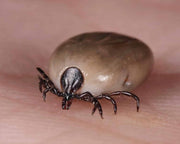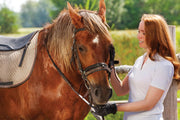Royal ‘ruff’: The distinguished and regal history of the king charles spaniel and its modern controversy

The King Charles spaniel is one of the UK’s longest established dog breeds, and one that also heavily influenced the development of their close relatives, Cavalier King Charles spaniels too.
King Charles spaniels are not as common today as they were historically - and have been far surpassed in terms of their popularity by the Cavalier variant, which is the UK’s 19th most popular dog breed, compared to 116th-placed ranking of the King Charles itself! However, the King Charles spaniel has a strong and dedicated following of owners and enthusiasts, as well as a very interesting history behind their royal name and origins. That said, the modern breed today is not only very low in numbers, but also shrouded in controversy. If you are considering buying a King Charles spaniel or already own one, you might be interested in learning a little more about the fascinating and very long history of the breed in the UK - and it’s very first origins. In this article, we will provide a short potted history of the King Charles spaniel - one of the UK’s most regal dog breeds! The breed’s oriental origins Whilst the King Charles spaniels’ name indicates a very British history - and this is certainly true of their modern history - the first dogs that founded the modern breed actually hail from much further afield. Toy dogs from Japan and other countries in the Far East are generally recognised as the breed’s founders, and they were initially brought to the UK as diplomatic gifts to the royal houses of Europe as far back as the 15th and 16th centuries. Paintings dating from the early 16th century show small red and white spaniels with petite, short muzzles and high skulls that lived in Italy, and it is likely that these dogs were then crossed with other oriental breeds as well as local Maltese dogs too. Even before the breed became famous under the reign of King Charles, Queen Mary I and also other, later British royalty already owned small toy spaniels, as did many prominent members of royalty on the European mainland. King Charles himself Charles II of England (the titular King Charles) was a dog lover who had a particular preference for small spaniels, although he was not himself responsible for founding, naming, or advancing the breed - rather, he was perhaps the most notable owner of dogs of this type and one of the main reasons for their increasing popularity during the 17th century. Writings from the time state that King Charles’s spaniels had full freedom to roam the grounds of Whitehall Palace, and that his dogs were present at may formal and state occasions too. Notes from the diary of Samuel Pepys indicate that at grand state occasions, the king was often more interested in playing with his dogs than paying attention to what was going on around him! A truly royal breed Even after the death of King Charles in 1685, the dogs that he loved so much remained popular through subsequent reigns, with small red and white spaniels being in much demand among prominent families. The introduction of newly imported Chinese pugs to the UK during the late 17th century saw a lot of cross-breeding between pugs and toy spaniels, and marked the beginning of some significant changes to the look of the breed that we today call the King Charles spaniel - reflecting a flatter face more in line with that of historical pugs. In the 18th and 19th centuries, both King Charles spaniels and pugs were very popular as lapdogs and ladies’ companions, with smaller King Charles spaniels of the day weighing just 5-6lb, although their lives as pampered pets meant that a significant number of dogs of the breed are likely to have been extremely overweight. 20th century King Charles Spaniels Very early on in the 20th century when dog showing had really begun to take off in a big way and today’s Kennel Club had already been established for some decades, moves were made to amalgamate several distinctive toy spaniel dog types under the heading of one breed name. Royal intervention on the part of King Edward VII ensured that this breed became known as the King Charles spaniel. The breed was very popular at this time not only in the UK, but also across the world - and famously, Grand Duchess Anastasia Nikolaevna of Russia had her beloved King Charles spaniel by her side when the Romanov family was assassinated in 1918, with the dog’s corpse discovered alongside of those of the family itself. The Duchess of Marlborough was one of the breed’s biggest fans in the first half of the 20th century - and in fact, she bred so many King Charles spaniels of her own that her own husband moved out of Blenheim Palace in protest, before ultimately evicting her and her dogs from the palace later on. The Duchess of Marlborough also set up a breeding programme to try to replicate the historical variant of the King Charles spaniel as seen in paintings from King Charles’s reign, although her efforts were largely unsuccessful. The Cavalier King Charles spaniel breed came into being as a result of these efforts, however, a move that was cemented by Roswell Eldridge, who hosted a competition to find examples of “old type Blenheim spaniels,” with longer faces and flatter skulls - and dog breeders whose dogs fitted these criteria worked together to found the Cavalier King Charles spaniel breed that we know today. The modern breed controversy Virtually all modern dog breeds that have ancient origins have gone through a range of changes over time, some of which evolve naturally and some that are the result of deliberate selective breeding to produce specific in-demand or so-called desirable traits. Breeding for exaggerated traits is something that has been rife within King Charles spaniel breeding programmes throughout their modern history, and this has introduced a range of health and conformation problems into the breed itself that threaten its future, as well as the health and wellness of individual dogs. Syringomyelia, a very painful and debilitating condition that develops from an exaggerated conformation is perhaps the breed’s most high-profile problem, and the King Charles spaniel was one of the breeds most critically assessed in the BBC’s 2008 documentary exposé, Pedigree Dogs Exposed. Today, King Charles spaniels are still prone to a range of health and conformation problems that can have a significant negative impact on the dogs themselves - and they are also becoming so low in numbers that the Kennel Club classes them as a vulnerable native breed. If you are considering buying a King Charles spaniel, you might have to wait some time to find an available puppy - and when you do, you should ensure that they are bred for health and a moderate conformation, and that the breeder has undertaken all of the appropriate health tests on their parent stock too. (Article source: Pets 4 Homes)





